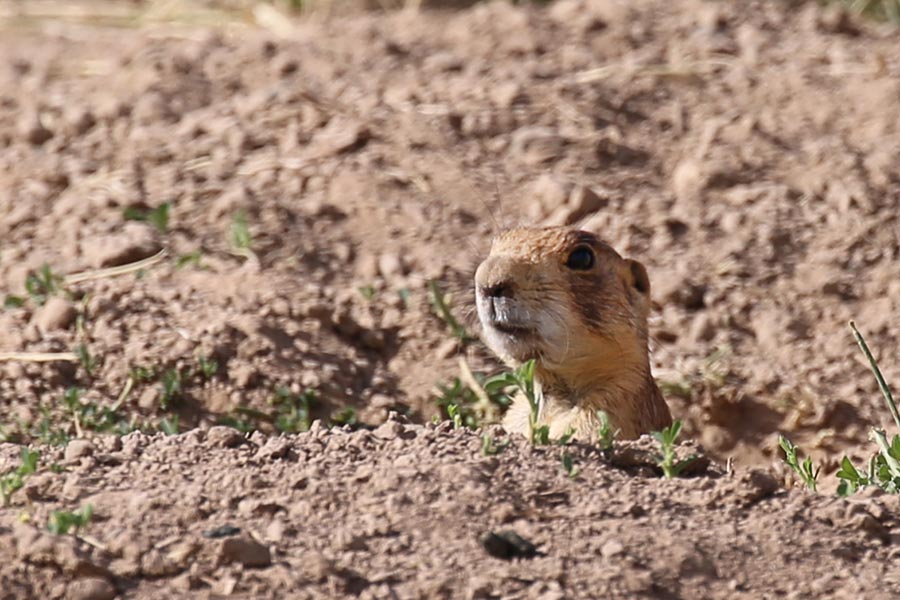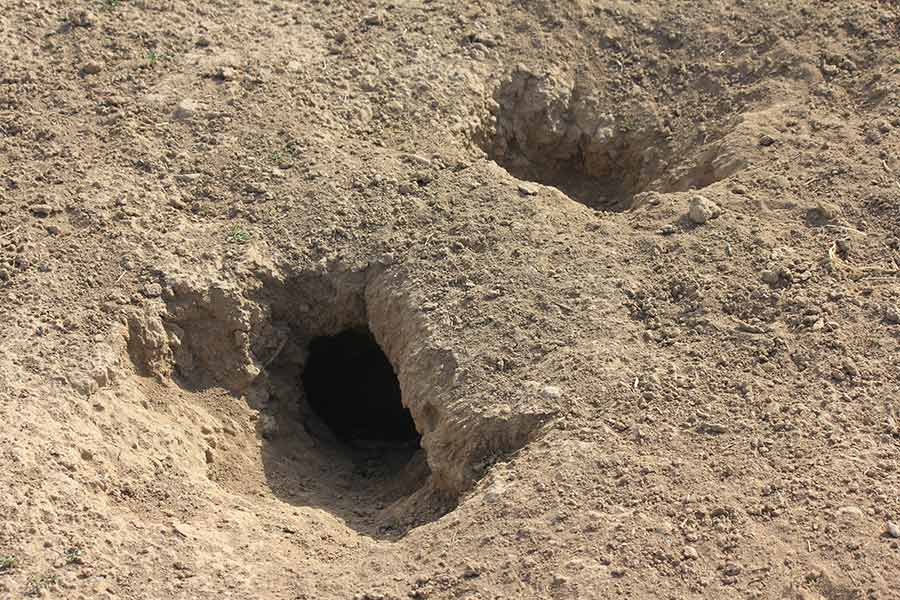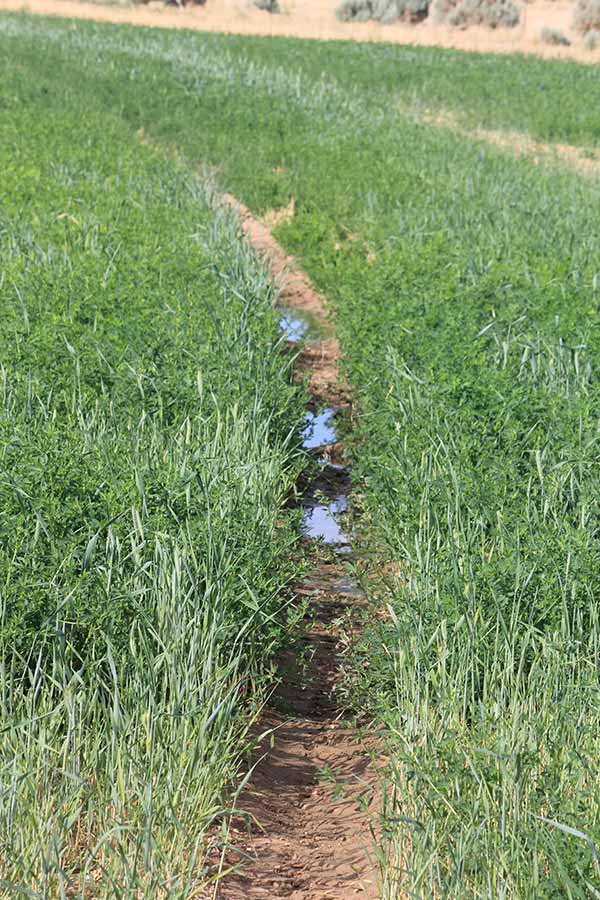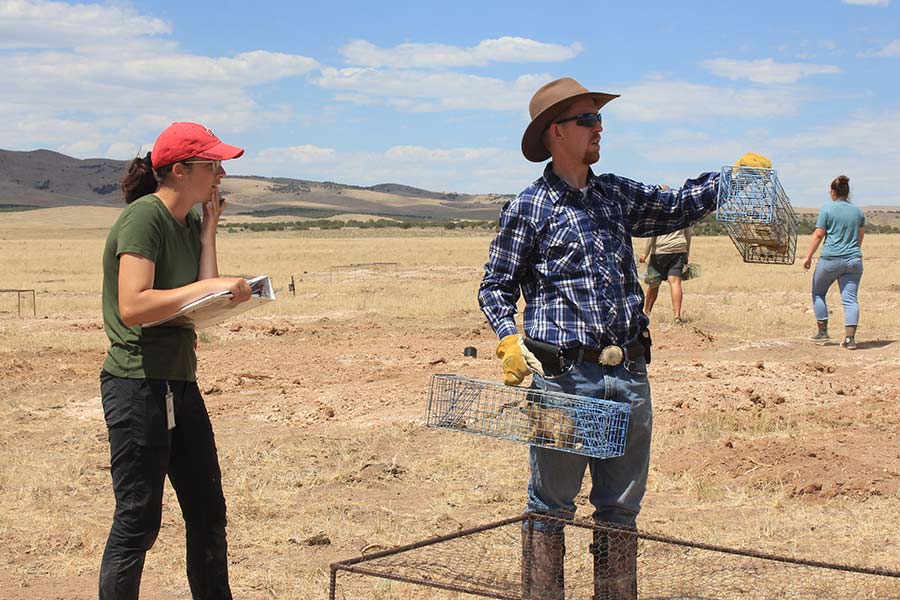Utah prairie dog FAQ
Is the Utah prairie dog a unique species?
Yes, the Utah prairie dog is genetically and geographically distinct from the other five prairie dog species in North America. Prairie dogs are divided into two subgroups based on the color of their tails. The first group includes the black-tailed and Mexican prairie dogs, which have long black-tipped tails and do not hibernate. The second group includes white-tailed, Gunnison's and Utah prairie dogs, which have shorter white-tipped tails and hibernate in winter.
Utah prairie dogs have less than half of the genetic variance within their populations than is found in black tailed prairie dogs.
How many species of prairie dog are found in Utah?
Utah is home to three prairie dog species:
What counties are Utah prairie dogs found in?
- Beaver
- Garfield
- Iron
- Kane
- Piute
- Sevier
- Wayne
Is prairie dog hunting allowed in Utah?
You may not hunt Utah prairie dogs. They are protected under the Endangered Species Act and state law. You may hunt Gunnison's and white-tailed prairie dogs under the conditions outlined in Administrative rule R657-19-10. See the Upland Game and Turkey Guidebook for additional information.
Is the Utah prairie dog under federal management? Has it been delisted?
The Utah prairie dog is currently under federal management and is listed as a threatened species under the Endangered Species Act. It has not been delisted.
Surveys, clearance letters and development
Is there any cost for a Utah prairie dog development survey?
Most development surveys are free of charge. Larger projects (over 100 acres) may require the use of a professional surveyor.
What do Utah prairie dog surveys entail?
Surveys are conducted on-site by a trained biologist or technician. Surveys consist of three visual scans for Utah prairie dogs, followed by walking transects of the property to look for burrows and/or prairie dog droppings.
What time of the year can I have a survey performed?
Surveys can be performed year-round, as long as weather conditions are met and snow is not covering the survey area. The time of year and location also impact how burrows are counted during the survey:
- During the active season (April 1–Aug. 31*), only active burrows are mapped.
- During the inactive season (Sept. 1–March 31*), all functional burrows are mapped.
*Dates may be flexible, depending on conditions.
How long are my survey results good for?
All survey results expire at midnight on April 1 of each year. This is even the case for surveys completed in March. However, survey results can remain valid as long as construction began before the expiration date and remains continuous/uninterrupted.
Can I still get a survey if I have already started construction or performed ground disturbance?
If ground disturbance has occurred before a survey, you will need to stop and do either of the following:
- Pay mitigation fees for the disturbed area
- Wait for a follow-up survey to be performed
Keep in mind: During the active season, the waiting period for a follow-up survey is two weeks. During the inactive season, you would have to wait until the following April 1 for a new survey.
Where do mitigation fees go?
All mitigation fees are paid to the county and put into a conservation fund for the species.
Are mitigation fees used to trap Utah prairie dogs off my property?
No, mitigation fees are put into a conservation fund used to offset impacts to the species. The DWR offers free Utah prairie dog trapping for development when feasible within the development schedule.
What do I need to do if my project has federal funding?
Development projects funded, authorized or carried out — in whole or in part — by a federal agency fall under Section 7 of the Endangered Species Act and require a consultation with the U.S. Fish and Wildlife Service.
Agricultural control permits
Does my land qualify for an agricultural control permit?
To qualify for an agricultural control permit, your property must:
- Have a minimum spring count of seven Utah prairie dogs
- Meet the general classification of irrigated, dryland, grazing land, orchard or meadow
- Be capable of producing crops or forage
- Be at least five contiguous acres (properties smaller than five acres may qualify if they are devoted to agriculture use in conjunction with other eligible acreage under identical legal ownership)
- Be managed in such a way that there is a reasonable expectation of profit
- Have been devoted to agricultural use for at least two successive years immediately preceding the year in which the application is made
- Meet the average per-acre annual production requirements
Are subpermittees covered under my control permit application?
No, all subpermittees must fill out their own applications, in addition to the primary landowner's application.
How many prairie dogs will I be allowed to take?
Lethal take for agricultural control is meant to reduce the impacts of Utah prairie dogs, not completely remove the population. Therefore, allowed take is limited to one-half of a colony's estimated annual productivity. The formula to calculate annual productivity is as follows: [(2 × spring adult count) × 0.67 (proportion of adult females) × 0.97 (proportion of breeding females) × 4 (average number of young per breeding female)]. This equals approximately 36% of the total estimated population of the colony.
Prairie dog trapping
Is trapping required?
Trapping for development projects should occur when feasible within the development schedule. Trapping independent of development, agriculture or human health and safety is not required but provided to qualifying landowners who request it.
How successful is trapping?
Trapping success varies based on multiple factors and rarely results in removal of 100% of the prairie dogs on a property. Factors such as food availability, history of lethal control and acclimation to humans can impact trapping success.
Where are translocation sites located?
Translocation sites must be located on public land or on other land protected under an agreement with the U.S. Fish and Wildlife Service.
How many prairie dogs can you trap?
How many Utah prairie dogs can be trapped depends on the property and the category of trapping that the property falls under. For safety, development and independent-of-development trapping, all Utah prairie dogs on the property are able to be trapped. Despite our best efforts, we are not always able to trap every single individual. For agricultural properties, the amount of Utah prairie dogs able to be trapped depends on the spring count of adult Utah prairie dogs on the property. Agricultural trapping only applies to adult animals over 1.10 lbs.
– XLSX (9.36 KB)
– PDF (83.26 KB)
– PDF (80.28 KB)
– PDF (7.94 KB)
– PDF (27.58 KB)
– PDF (1.8 MB)
– PDF (11.38 KB)
– PDF (2.2 MB)
– PDF (798.25 KB)
– PDF (150.76 KB)
– PDF (39.9 KB)
– PDF (66.39 KB)
– PDF (163.67 KB)






















